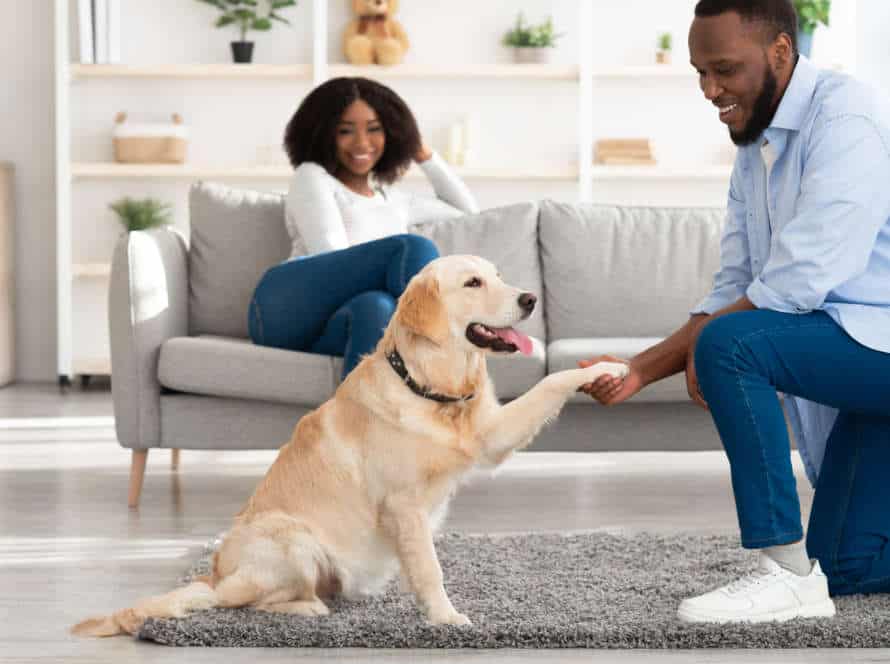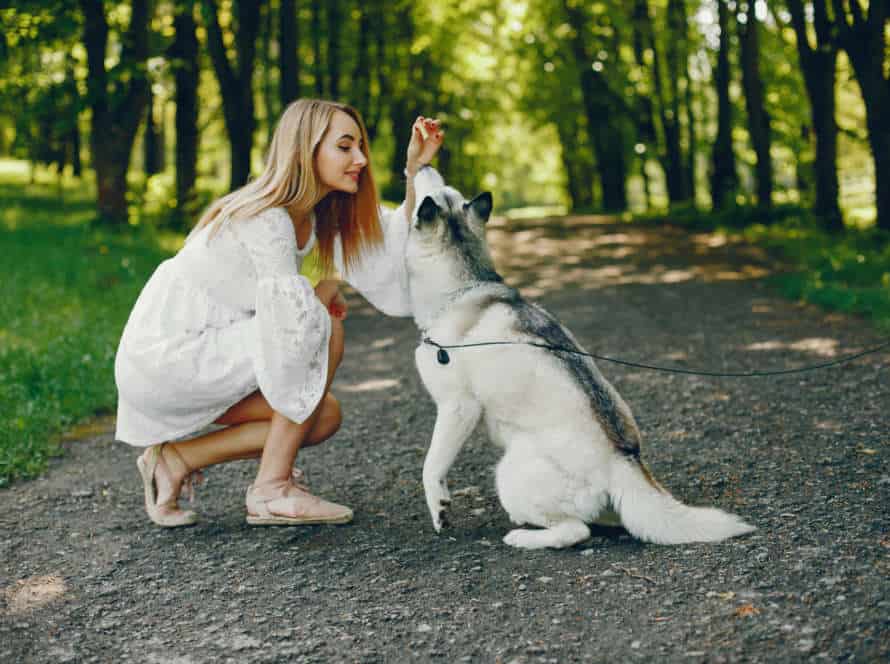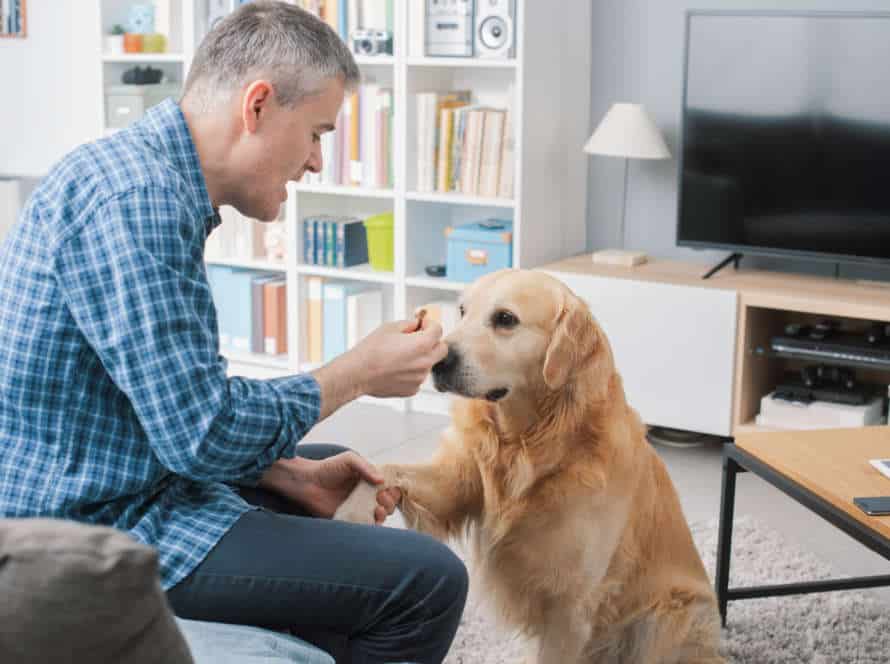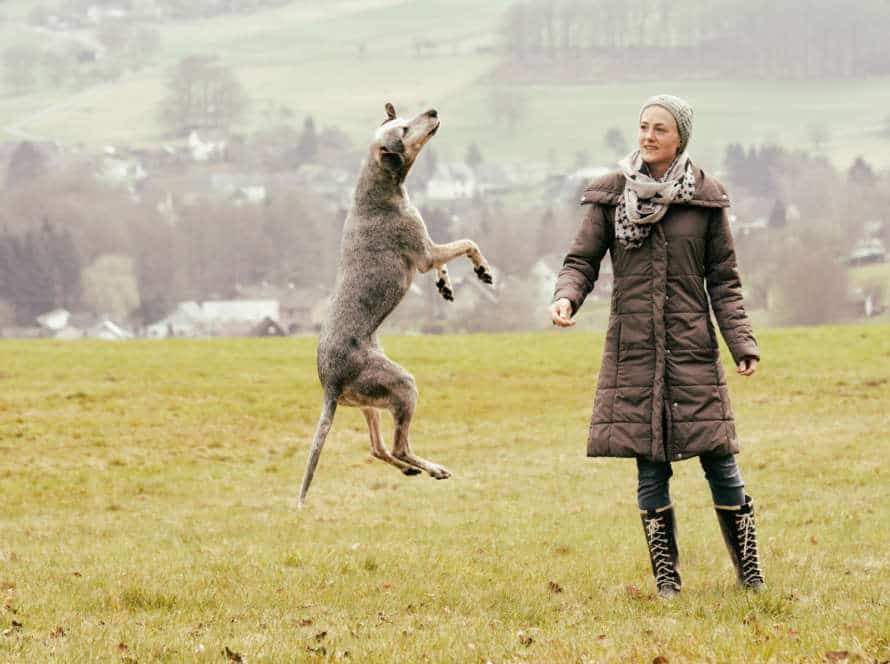Positive Reinforcement: A Powerful Tool for Adult Dog Training
Positive reinforcement? Yes! It’s a powerful and effective technique for adult dog training. Instead of punishing bad behavior, reward the good! Here are some tips:
- Treats, praise, toys – use these to reward your dog when they do something right.
- Be consistent! Reward them each time they do the desired behavior.
- Use a marker word or sound like “yes” or a clicker to signal they’ve done it correctly.
- Patience and persistence: your pup might take some time to learn.
By using positive reinforcement, you’ll train your adult dog and strengthen your bond with your furry friend!
The Science Behind Positive Reinforcement Training
Positive Reinforcement is a mighty instrument for grown-up dog training. The science behind it is reliable. It is based on the rules of operant conditioning. This can aid pet owners to alter their pet’s behavior in a humane and effective manner. We will explore the science of Positive Reinforcement and how it can be applied to teach adult dogs in this article.
Understanding Operant Conditioning and Positive Reinforcement
Operant conditioning is a way to encourage or discourage certain behaviors. It’s done with positive or negative consequences. Positive reinforcement is a form of this. It’s when a desirable stimulus, like a treat, is given to make a behavior happen again.
Positive reinforcement training is a good and kind way to teach adult dogs new behaviors and strengthen the good ones. It can make the bond between you and your pup stronger and better their confidence and health. An example of this is giving them treats and compliments when they do what you want – like sitting or staying. There is no need to use fear or physical punishment. Positive reinforcement techniques like treats and praise work just as well, if not better.
Pro tip: Keep training short and fun. Also, give rewards that your pup loves.
The Importance of Timing and Consistency
Timing and consistency are vital parts of positive reinforcement training for older pooches. Timing is when the reward or punishment happens and consistency is using the same reward or punishment every time the behavior occurs.
Good timing helps the dog link the behavior with the reward quickly. Consistency builds trust and understanding between the trainer and the dog.
Positive reinforcement training is a strong tool used to motivate desired behavior. This is based on operant conditioning, where behavior followed by a reward is more likely to happen again.
Trainers must be consistent with rewards and punishments and make sure the timing is precise for desired behavior. Consistency in rewards and punishments will make the dog remember the learned behaviors better.
Tip: Avoid punishment while training your pup, as it can confuse them and stop them from learning.
The Benefits of Positive Reinforcement Training for Adult Dogs
Positive reinforcement training for adult dogs is way better than punishment-based methods. Benefits include:
- Better obedience and behavior – rewarding good behavior encourages dogs to repeat it.
- A stronger bond between owner and dog – rewards foster trust.
- Reduced stress and fear in dogs – it’s a safe and positive learning environment.
- Enhanced learning and retention – dogs learn faster and remember their training for longer.
Pro tip: Be consistent, patient, and use high-value rewards for successful training.
Using Positive Reinforcement in Adult Dog Training
Positive reinforcement: a great way to train adult dogs! Reward desired behaviors with something positive, like a treat, toy, verbal praise or physical affection. Learn how you can use it to train an adult dog effectively. Give rewards and let the happy pup learn.
Identifying Your Dog’s Motivators
Discovering what motivates your pup is an essential part of adult dog training with positive reinforcement. Knowing what causes your pup to get excited can help you adjust your training to get the desired response. Here’s some advice on identifying your pup’s motivators:
- Observe their behaviour – Does your pup get excited when they hear ‘treat’ or ‘walk’?
- Test different rewards – Give your pooch various treats (e.g. cheese, chicken, carrots) and see which they prefer.
- Experiment with play – Find out which toys your pup likes best, like a ball or tug toy.
Remember, each pup is unique and may react differently to rewards. By finding out what motivates them, you can use positive reinforcement to train them successfully.
Choosing Rewards for Positive Reinforcement Training
Positive reinforcement training is a powerful tool for adult dog training. To succeed, you need to pick the right rewards. These must be both effective and enjoyable for your pup. Here are some tips:
- Think about your dog’s likes – what treats, toys, or activities do they prefer?
- Give high-value rewards – such as chicken or cheese, to really motivate.
- Be consistent – use the same reward each time to reinforce good behavior.
- Vary the rewards – mix it up to keep your pup engaged in training.
Pro tip: Test different rewards to see what works. Note your dog’s preferences and adjust accordingly.
Creating a Training Plan with Positive Reinforcement Techniques
Positive reinforcement is a humane way to modify behavior in adult dogs. It rewards desirable behavior, instead of punishing bad. Making a training plan with positive reinforcement takes these steps:
- Identify what you want to teach.
- Choose a reward that motivates your dog, like treats, toys or praise.
- Reward your dog every time they do the desired behavior.
- Make it harder by adding distractions or increasing difficulty.
- Don’t punish. Redirect the dog when they do something unwanted.
- Check in regularly to see how it’s going and adjust if needed.
Positive reinforcement makes dogs feel appreciated, more likely to cooperate, and enjoy training.
Tips for Successful Positive Reinforcement Training
Positive reinforcement training is great for adult dogs! Teach them behaviors you want, from basic commands to more complex ones. To make it work, you must understand the basics and how to do it right.
Here are some top tips for successful positive reinforcement training:
Start with Basic Commands
Positive reinforcement is awesome for adult dog training. As a pup parent, it’s essential to begin with elementary orders and gradually move to more complex ones for a great training experience. Here’s some advice to keep in mind:
- Start off with the easy commands like “sit,” “stay,” “come,” and “heel.”
- Cheer them on, give treats, and offer toys to reward your pup for obeying commands.
- Train in brief sessions of 5-10 minutes, multiple times a day.
- Step by step, prolong and up the difficulty of each command as your pup becomes more skilled.
- Stay patient and consistent with your training, and always finish with something positive.
- Utilizing positive reinforcement can help strengthen the relationship between you and your pup while also encouraging great behavior. So remember to have fun and savor the journey.
Pro-tip: If your doggo is having trouble with a specific command, try breaking it down into simpler, easier pieces to heighten their confidence and knowledge.
Use Verbal Cues and Markers for Positive Reinforcement Training
Verbal cues & markers are vital for successful positive reinforcement training with adult dogs. They provide a clear & immediate way to praise & reward your pup during training. This helps ’em understand which behaviour is being rewarded & improves learning & retention. Cues such as “good boy/girl” & “yes” can be effective in strengthening positive associations. Markers like a clicking sound or word signal that a reward is coming & create predictability & motivation. Incorporating these techniques deepens your bond & leads to better outcomes! Pro tip: Be consistent & timely with your verbal cues & rewards to maximize their impact.
Don’t Punish: Use Positive Reinforcement to Correct Behaviors
Positive reinforcement is great for training adult dogs. It’s an alternative to punishing bad behavior. Here’s how to use it successfully:
- Reward quickly – Give the treat as soon as the behavior is done.
- Use something yummy – Cheese or cooked chicken are a hit with most dogs.
- Be consistent – Always give the same reward and use the same words.
- Make it fun – Add in some play and praise for best results.
Remember, positive reinforcement works best when used with clear instructions, boundaries, and patience.
Troubleshooting Common Issues in Positive Reinforcement Training
Positive reinforcement is a great way to train adult doggos. Give ’em treats, toys, or kind words when they do something good! But, sometimes things don’t always go to plan. So, let’s chat about how to fix some of the most common problems when it comes to positive reinforcement training.
Understanding Frustration and Redirecting Negative Behaviors
Frustration is a common issue in positive reinforcement training. To tackle this, you must redirect negative behaviors. Work out why it’s happening: is the task unclear? Is the dog under-challenged? Or are the rewards not valuable enough?
Identify the root cause and adjust your approach. Try increasing the challenge level. Break down the behavior into smaller parts. Provide more valuable rewards.
Positive reinforcement is a powerful tool – use it right to build a strong bond with your dog, and teach them the behaviors you want.
Addressing Distractions in Positive Reinforcement Training
Distractions can be a challenge when it comes to positive reinforcement training. However, there are ways to address this. Here’s how to troubleshoot distractions:
- Use high-value rewards. Treats or toys that your dog loves can help keep their focus on the session.
- Start with low-distraction environments. Train in a quiet, low-traffic area.
- Increase distractions gradually. Introduce controlled distractions such as new sounds or sights.
- Use positive reinforcement techniques. Reward good behavior and ignore bad behavior.
With these techniques, you can use positive reinforcement to train your adult dog – even with distractions.
Adjusting Your Training Plan for Optimal Learning
Tune your training plan! That’s important to get the most out of positive reinforcement techniques. It’s a great tool for adult dog training but has common issues. Troubleshoot them so you can make the right plan for optimal learning.
Timing is key in positive reinforcement. This will reward the behaviour you want to keep. So, time your reinforcement correctly to give your dog the best behaviour. Also, the environment needs to be free from distractions. This will help your dog focus on your training.
Alter your plan and sort out these issues. This will give your dog the best learning experience with positive reinforcement. A tip: Set realistic goals for both you and your dog. Positive reinforcement takes time, patience and needs to be consistent.
Frequently Asked Questions
Q: What is positive reinforcement for dog training?
A: Positive reinforcement is a training method that rewards good behavior with treats, praise, or other positive stimuli, instead of punishing bad behavior.
Q: Why is positive reinforcement a powerful tool for adult dog training?
A: Positive reinforcement has been proven to be an effective and humane method for training dogs of all ages. It helps to build a strong bond between owner and dog, and fosters trust and cooperation.
Q: How can positive reinforcement be used to train adult dogs?
A: Positive reinforcement can be used to teach adult dogs a variety of behaviors, from basic obedience commands like sit and stay to more advanced behaviors like agility training.
Q: Is positive reinforcement the only method of dog training that should be used?
A: No, positive reinforcement is just one method of dog training, and different dogs may respond better to different training methods. However, positive reinforcement should always be used in conjunction with humane training techniques and should never involve physical punishment or harsh treatment.
Q: How long does it usually take to see results when using positive reinforcement to train an adult dog?
A: The amount of time it takes to see results when using positive reinforcement to train a dog can vary depending on the individual dog and the behavior being trained, but most dogs will show improvement within a few weeks or months.
Q: Can I use positive reinforcement to train an older dog who has already developed bad habits?
A: Yes, positive reinforcement can be effective for training older dogs who have developed bad habits. However, it may take longer to see results, and it is important to be patient and consistent in your training approach.







